Tarryn Cawood - Project Profile
Ph.D. Candidate, University of Southern California, during AGeS project
How old is the gold? How dating ore formation in SE California can help us find more of the precious metal
Most people will instantly recognize gold – that bright, shiny metal that’s used in everything from phones and GPS units to mom’s wedding ring and grandad’s tooth fillings. Something this spectacular should be easy to spot, but gold in its natural habitat is remarkably tricky to find. This is because much of it occurs as tiny flecks, often too small to see with the naked eye, sitting in quartz veins, sulfide minerals, or just disseminated along a host fault. Seeing as exploration geologists on the hunt for gold can’t just rely on spotting it laying around (unless they’re having a very lucky day), they’ve had to figure out what other tell-tale signs might signal its presence. Chief among these are faults, which provide a pathway for gold-bearing fluids to move through the crust, and specific alteration assemblages, made up of hydrothermal minerals formed when these fluids reacted with the host rock.
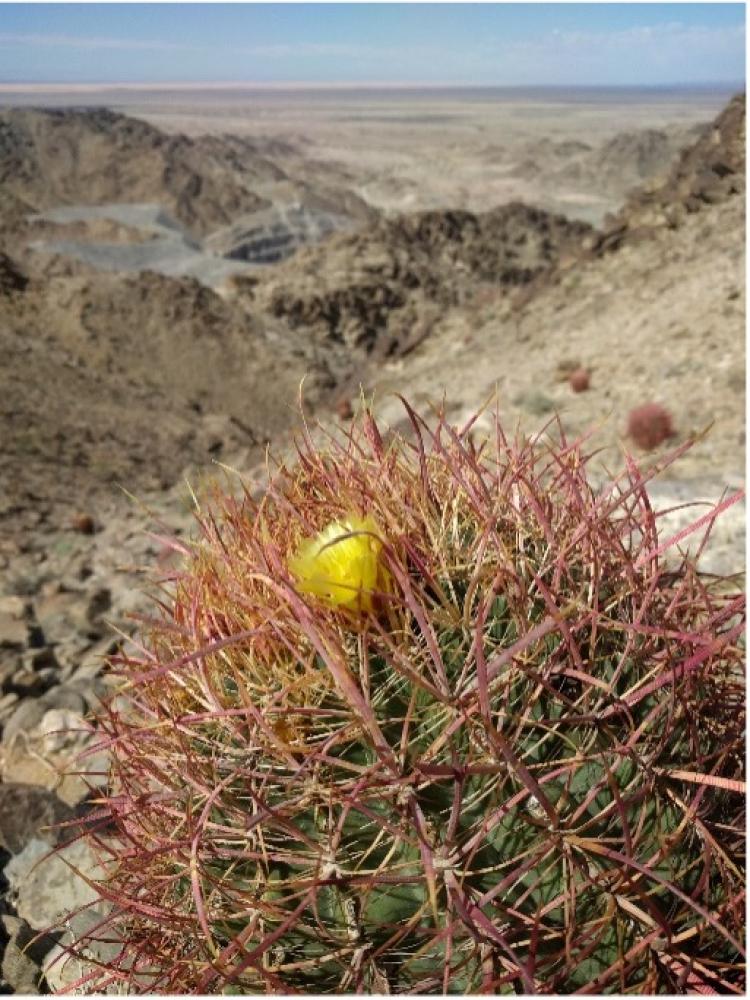
These are signs that the rocks of southeast California have in abundance – they are criss-crossed by all sorts of faults, from ductile shear zones that formed during the Late Cretaceous Laramide Orogeny, when subduction of an oceanic plateau caused major compression in the overriding continental plate; to gently-dipping brittle faults that formed later, when the compressed, thickened crust collapsed under its own weight; and even younger, steep brittle faults that form part of the San Andreas system. Structures? Check. The rocks of this area also have a profusion of hydrothermal alteration assemblages, with spectacular, bright green epidote, massive patches of garnet, and intricately deformed, narrow veins of magnetite and quartz. Because these alteration assemblages cross-cut the fabric of the ductile shear zone, but have also been folded and smeared out by it, we know that they were formed at the same time as the ductile shearing. But wait, there’s more – those gently-dipping brittle faults also have eye-catching minerals formed along them. In this case, they include bright red and orange iron oxides, and areas of blue-green chrysocolla and malachite so lurid they look like some graffiti artist has been at the rocks. Hydrothermal alternation? Check.
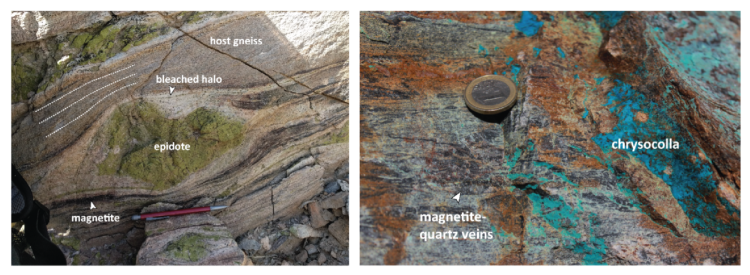
So that means we should have gold, right? Indeed, gold has been extracted from these hills for over a hundred years, so looking for faults with hydrothermal alteration looks like the right thing to do to find more of it. But there’s one catch – should we look for ductile, thrust-sense shear zones with epidote and magnetite-quartz veins? Or should we look for gently dipping brittle faults with bright oxides and malachite? Checking known mineralization in the inactive open pit of the old Golden Cross mine doesn’t give a definite answer, because the structures and alteration assemblages mostly overlap. In the rare places they don’t – where you see the older, ductile shear fabric with its magnetite-quartz veins, but without any younger brittle overprinting – careful hunting does show some sulfides, with – yes! that’s it! – microscopic gold. So does this mean that the gold and its accompanying sulfides were introduced at the time of ductile shearing? Maybe…
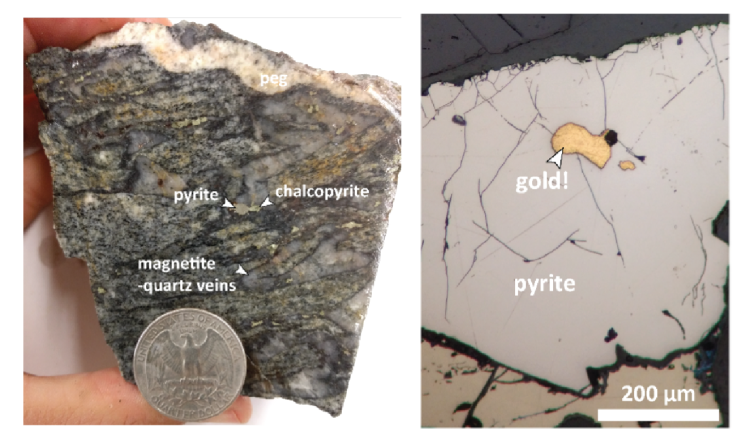
Found it! Hiding in the pyrite, just next to those magnetite-quartz veins
The gold and sulfides (pyrite and chalcopyrite, in this case) may have been precipitated by the same hydrothermal fluids that formed the epidote and magnetite-quartz veins, during ductile shearing. In this case, to find more gold, we’d search out other areas with ductile thrust-sense shear zones, epidote, and magnetite. Easy! However, the fluids that carry gold and sulfur can play some sneaky tricks, and one of them is precipitating their gold where they meet an iron-rich chemical trap. It turns out that all that was keeping the gold in solution was its bond to sulfide ions; but sulfide ions are easily won over, and if they meet up with iron anywhere along their fault-bounded journey, they’ll abandon their old gold friend, and bond with the iron to form pyrite instead. With nothing to keep it in solution, the gold drops out, and the result is both pyrite and gold being precipitated alongside the iron-rich trap rocks. In our case, this means that the gold may have been introduced during the earlier, ductile shearing – or that it was carried in along the later brittle faults, but was precipitated along the pre-existing magnetite veins, with the magnetite acting as the chemical trap. So how do we figure out which is correct? If only we had a way to date the gold mineralization directly, we could compare it to independent age estimates for the older- and younger deformation events. But most of the traditional radiogenic isotopes used to date minerals are only found in datable concentrations in silicate minerals like zircon or micas, not in gold or sulfides…
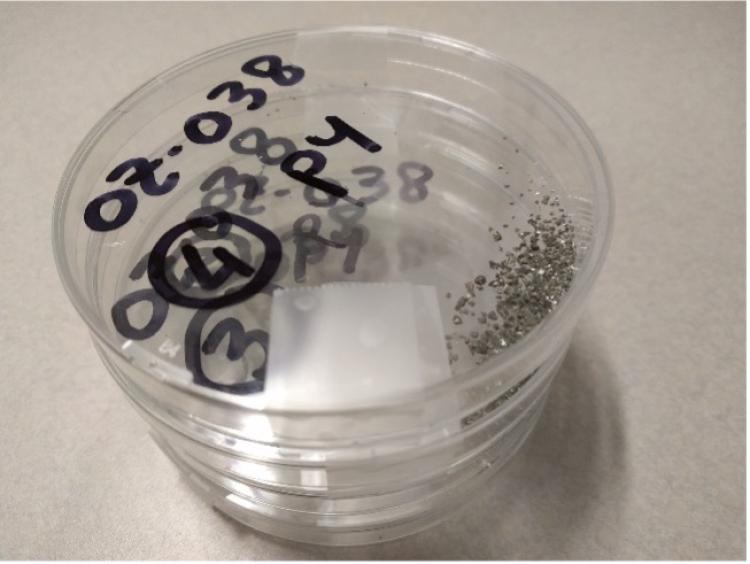
Enter my new favorite elements, rhenium and osmium! The Re-Os isotope system is one of very few that both has components that occur in sulfides in measurable amounts (just!), and can be used to calculate an age. Thanks to the AGeS2 program, I was able to team up with Professor Alan Rooney at the Yale University Metal Geochemistry and Geochronology Center, where we dated pyrite and chalcopyrite by isotope dilution negative thermal ionization mass spectrometry. This mouthful of a technique requires a few grams of pure sulfide – obtained by smashing several kilograms of mineralized rock, and picking out the liberated pyrite and chalcopyrite fragments with plastic tweezers, avoiding metal at all stages – that are then subjected to a rigorous procedure involving boiling acid, microdistillation, and all sorts of very sciencey-looking activities in labcoats and goggles. Then at long last, it’s time to analyze! We were about to find out just how old the sulfides (and, by association, the gold) was – would it be Late Cretaceous, like the ductile thrusting and magnetite-quartz veins? Or younger, perhaps Eocene or even Miocene, and related to the later brittle faulting?
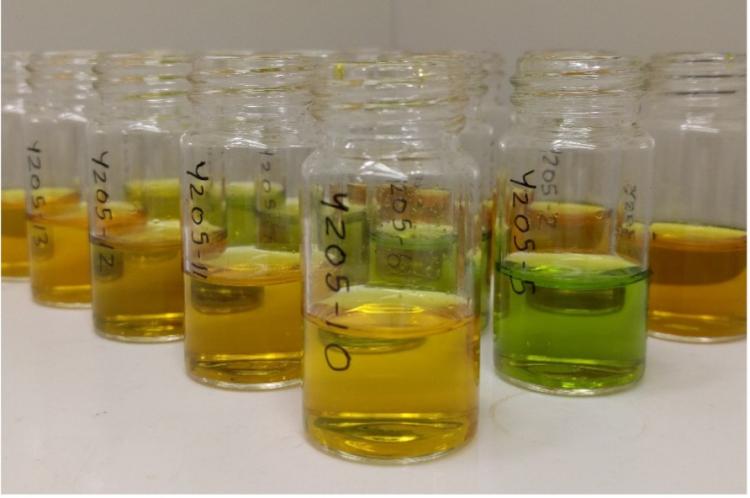
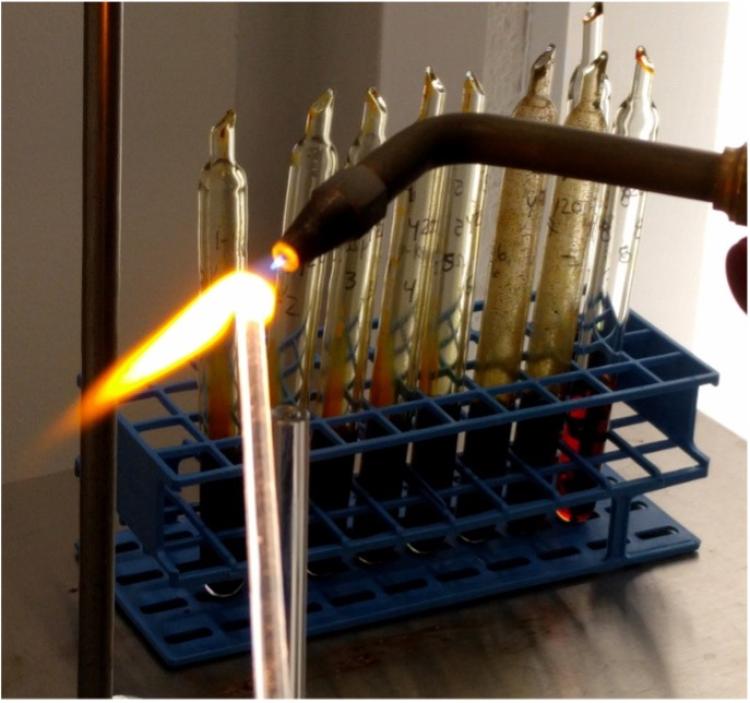
It turned out to be (enter suspenseful music here)…. Late Cretaceous! The sulfides yielded a beautiful Re-Os age of 65 Ma, which perfectly overlaps with our independent ages for ductile Laramide shearing in the area. So it turns out they were precipitated together with the magnetite-quartz veins (or very, very soon after them) after all.

At long last, we have an answer! To find more gold in SE California, you should look for Late Cretaceous, ductile shear zones with epidote and magnetite alteration, that formed during the Laramide Orogeny. But to hit the absolute jackpot, perhaps keep an eye out for where these structures are overprinted by the younger, brittle faults, because we suspect those may help upgrade the mineralization…
Interested in the rest of my research? Check out my website, or follow me on ResearchGate or LinkedIn.

